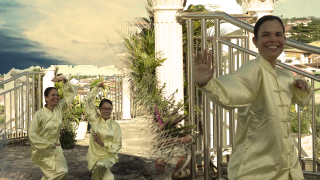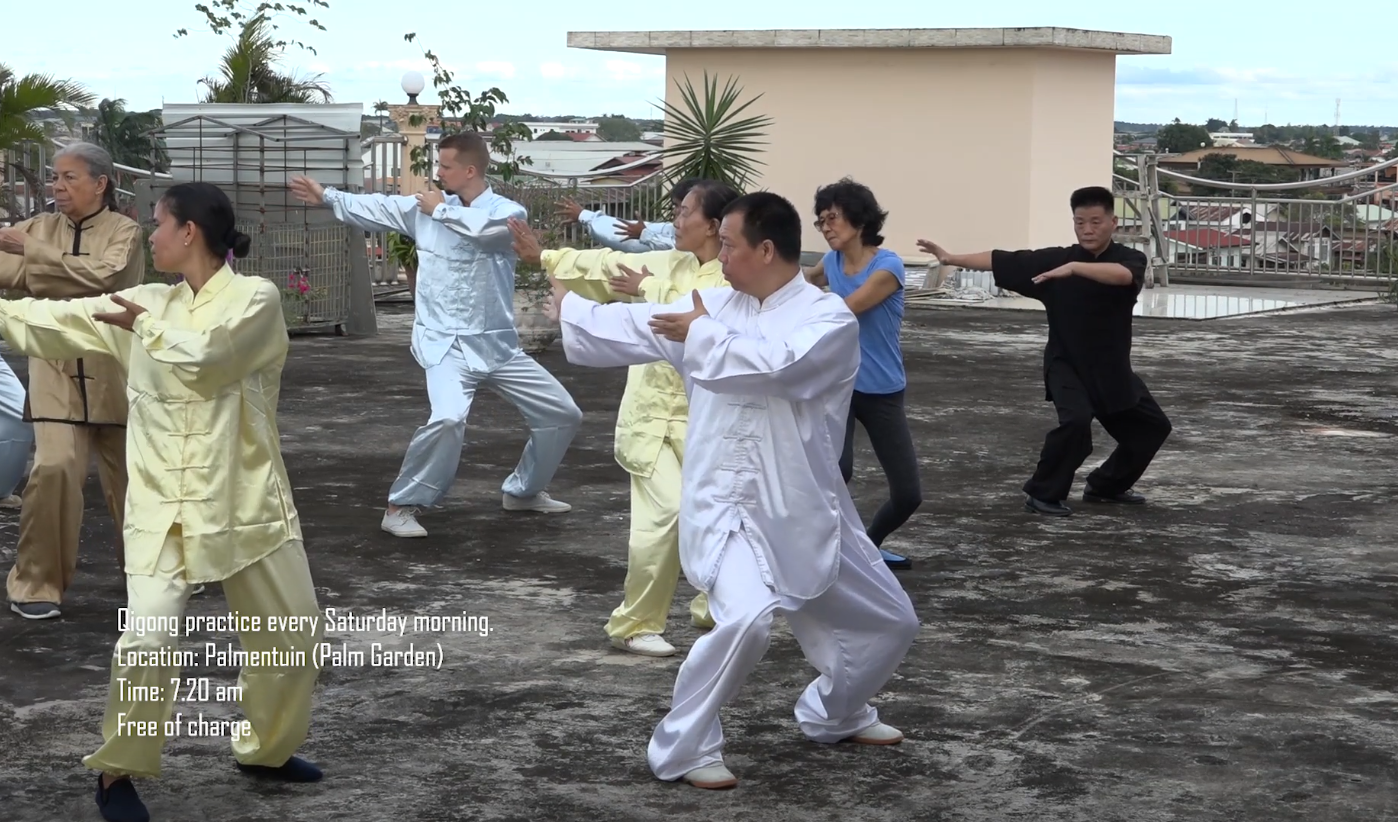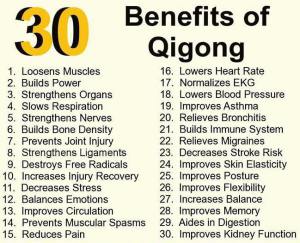
What is Qigong?
Qigong can be simply defined as the art of training one’s qi (vital energy) and mind (mental consciousness). The Chinese character “Qi“, means respiration, while “Gong” means continuous regulation of one’s breath and posture with the mind conducting the process. To do Qigong exercise is to train Qi and mind, with the mind leading the Qi (this is the Gong Fu of Qi) to circulate along the network of channels, to promote and enhance functional activities of the internal organs and to develop yuan Qi (inner/intrinsic energy). This can help prevent and cure diseases, and keep good health.
Learners of Qigong can choose the type and form of the exercise according to their state of disease, age and physical condition. They may practice the Qigong exercise in motion (dynamic Qigong), in stillness (static Qigong) or in motion and stillness alternately (Nei Yang Gong/inner nourishing Qigong} as to keep the energy channels in good shape, regulate the blood circulation and vital energy, maintain balance of Yin and Yang and strengthen one’s physical condition. As a result it cures diseases and brings good health.
Therefore, Qigong is a self- training exercise of body and mind with the help of mental direction. It is a science to keep fit and prolong life through self-regulation and self-control of the process of life. It is also an art of cultivating intrinsic energy or inner energy of the human body and building up health. Human life solely depends on Qi. A thing takes shape when Qi accumulates, and dies out when Qi dissipates. A human body is healthy and balanced if there is no stagnation in the circulation of Qi and blood. One’s health is also closely related to the activity of one’s mind. It is said in the oldest classic of Traditional Chinese Medicine that anger injures the liver, great joy injures the heart, worry injures the spleen, sorrow injures the lungs, and fear injures the kidney. After practicing Qigong exercises one feels relaxed, peaceful and free from nervousness. Qigong exercise helps to remove mental emotional disturbances relieving all the stress, resulting in restoration and regulation of one’s organism leading to good health.
Qigong is different from other sports in the way that it demands no strenuous exercise of the body in a short time, but requires slow regulation of the physiological functioning of the body by conscious application of the principles. Qigong exercise demands one to lay emphasis on internal movement. In other words, it is the regulation of the functional movements inside the body and the cultivation of vital essence, vital energy and vital spirit that count.
Qigong Is an exercise worked out, developed and gradually perfected by the Chinese people in their long struggle against nature. In order to survive, they had to overcome all kinds of difficulties enforced on them by nature through training their body organs and adapting themselves to the changing natural environments. Besides taking advantage of natural conditions to protect themselves, they had to train their body to meet with various difficulties and sufferings created by nature. In the course of time they came to realize the importance of self-protection and self-training, and to improve their ability to prevent and cure diseases. These exercises, having proved beneficial to the body and mind have been gradually developed into various types and forms. Different schools were established, including: Confucionist school, Chinese Medical school, Taoist school, Buddhist school and school of martial arts, teaching different styles and forms such as Daoyin, Xingqi, Liandan, Xuangong, Jinggong, Xinggong, Neigong, Neiyanggong, Yangshenggong, etcetera. In the treatment of diseases Qigong is based on the theories of Traditional Chinese Medicine such as the Yin Yang theory (the two opposite aspects in nature), the theory of the Jing Luo (channels and collaterals}, the theory of Qi Xue {vital energy and blood}, and the theory of Shi Xu (excess and deficiency}.

Qigong has had a history of thousands of years in China. On some copperwares from Shang Dynasty and early Zhou Dynasty there are pictures of ancient people in various postures practicing Qigong. This proves that Qigong came into existence long before the invention of written language. Many records about Qigong can be found in classics. The oldest medical classic is the Huang Di Nei Jing (medical Canon of Emperor Huang Di) which gave first priority to the preservation of health and prevention of diseases by practicing Qigong.
